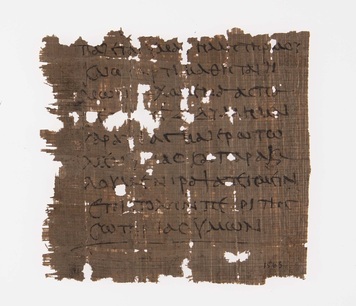
| καί ἐρωτῶ- μεν ὑμᾶς καὶ παρακα- λοῦμεν γράψατε ἡμεῖν ἐπιστολὴν περὶ τῆς σωτηρίας ὑμῶν | "And we ask and urge you to write us a letter concerning your health." |
| Λοιπὸν οὖν, ἀδελφοί, ἐρωτῶμεν ὑμᾶς καὶ παρακαλοῦμεν ἐν κυρίῳ Ἰησοῦ, ἵνα καθὼς παρελάβετε παρ’ ἡμῶν τὸ πῶς δεῖ ὑμᾶς περιπατεῖν καὶ ἀρέσκειν θεῷ, καθὼς καὶ περιπατεῖτε, ἵνα περισσεύητε μᾶλλον. | "Finally, brothers and sisters, we ask and urge you in the Lord Jesus that, as you learned from us how you ought to live and to please God (as, in fact, you are doing), you should do so more and more." |
In any case, the new papyrus demonstrates that we need not ignore the epistolary qualities of Paul's writings. It also means that we would do well to study documentary papyri, knowing that they can help us understand Paul's world in more ways than one. Deissmann may have been ultimately wrong in his conclusions about the literary character of the New Testament writings, but he was most certainly right about the significance of the papyri for our understanding of Paul's literary framework.
